If you’ve ever gazed into an aquarium and wondered what it was like to see colorful fish in their natural environment, complete with coral and strange ocean creatures, you’ve come to the right place. Hawai‘i features a dazzling variety of fish. Over 600 species are found in our waters. We can’t conceive of a trip to Hawai‘i without snorkeling at least once. We got the reef, we got the water, and we got the fish. What more do you need?
We’ll admit that we’re snorkeling junkies and never tire of experiencing the water here. If you’re completely or relatively inexperienced and plan on swimming or snorkeling, there’s a good chance you’ll have some questions about the reefs, and we have the answers.
Why is the water so clear here?
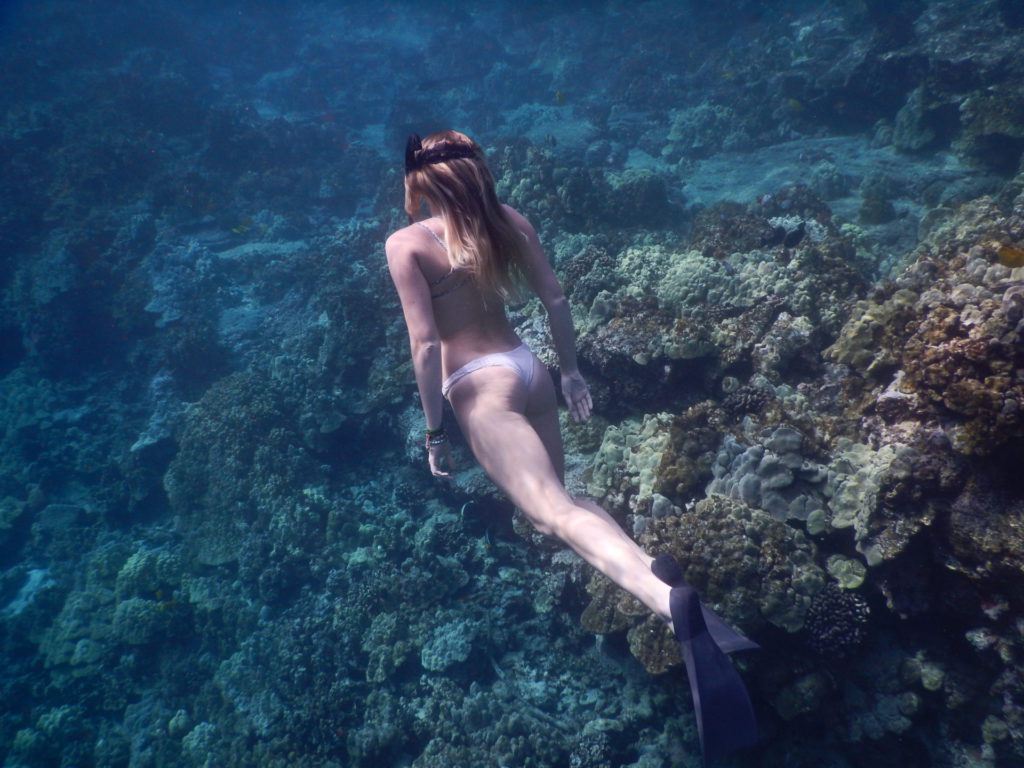 Because relatively little junk is poured into our water compared to the mainland. Runoff of sand, dirt and other sediment in rivers contributes to cloudy and murky water. While this is an important part of the cycle that brings nutrients to the ocean, it doesn’t help as far as visibility in the water is concerned. These islands are the new kids on the block (geologically speaking) compared to the continents, and have had less time and mass to erode away. The oldest island, Kaua‘i, has more waterways and more runoff entering the ocean. Thus, the waters around Kaua‘i tend to be less clear than on the youngest island, Big Island. There are comparatively fewer rivers and generally clearer water around Big Island. Weather patterns are another factor, with more runoff occurring on the rainy, windward sides than the dry, leeward sides of the islands. Also, natural currents tend to flush the water with a continuous supply of fresh, clean ocean water.
Because relatively little junk is poured into our water compared to the mainland. Runoff of sand, dirt and other sediment in rivers contributes to cloudy and murky water. While this is an important part of the cycle that brings nutrients to the ocean, it doesn’t help as far as visibility in the water is concerned. These islands are the new kids on the block (geologically speaking) compared to the continents, and have had less time and mass to erode away. The oldest island, Kaua‘i, has more waterways and more runoff entering the ocean. Thus, the waters around Kaua‘i tend to be less clear than on the youngest island, Big Island. There are comparatively fewer rivers and generally clearer water around Big Island. Weather patterns are another factor, with more runoff occurring on the rainy, windward sides than the dry, leeward sides of the islands. Also, natural currents tend to flush the water with a continuous supply of fresh, clean ocean water.
 Why does the ocean rarely smell fishy here in Hawai‘i?
Why does the ocean rarely smell fishy here in Hawai‘i?
Two reasons. We have relatively small tide changes, so the ocean doesn’t strand large amounts of smelly seaweed at low tide. Also, the water is fairly sterile compared to mainland water, which owes much of its smell to algae and seaweed that thrives in the bacteria-rich runoff from industrial sources. We don’t have an upwelling of cold, nutrient-rich waters common on the mainland, which causes plankton there to thrive.
Why do my ears hurt when I dive deep, and how are scuba divers able to get over it?
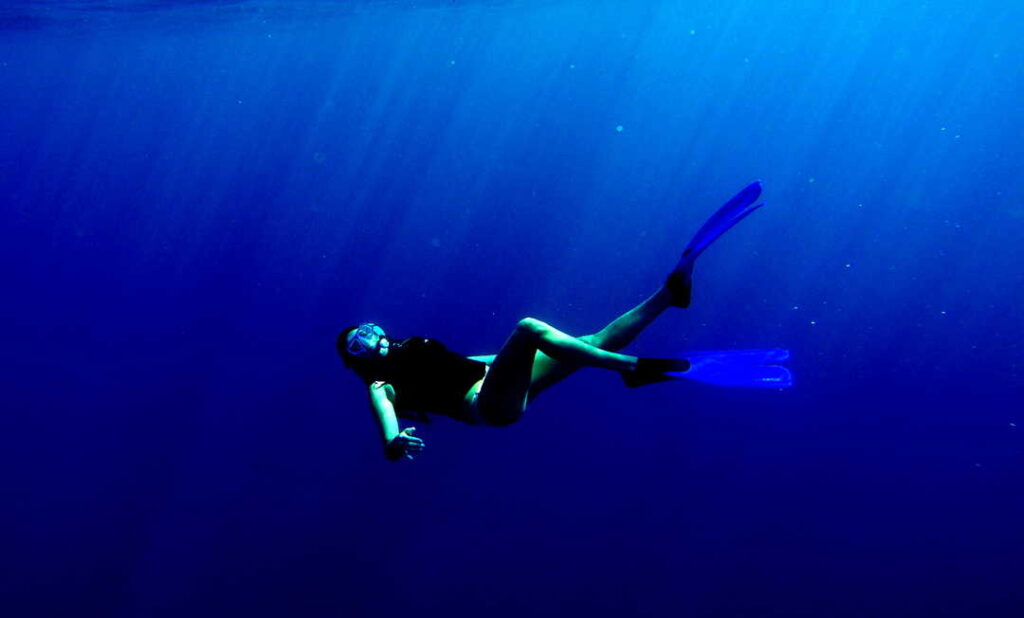 Because the increasing weight of the ocean is pressing on your ears the farther down you go. Divers alleviate this by equalizing their ears. Sounds high tech, but that simply means holding your nose while trying to blow out of it. This forces air into the eustachian tubes, creating equal pressures with the outside ocean. (It doesn’t work if your sinuses are clogged.) Anything with air between it gets compressed. So if you know someone who gets a headache whenever they go under water… well, they must be an airhead.
Because the increasing weight of the ocean is pressing on your ears the farther down you go. Divers alleviate this by equalizing their ears. Sounds high tech, but that simply means holding your nose while trying to blow out of it. This forces air into the eustachian tubes, creating equal pressures with the outside ocean. (It doesn’t work if your sinuses are clogged.) Anything with air between it gets compressed. So if you know someone who gets a headache whenever they go under water… well, they must be an airhead.
Why are there so few sea shells in Hawai‘i?
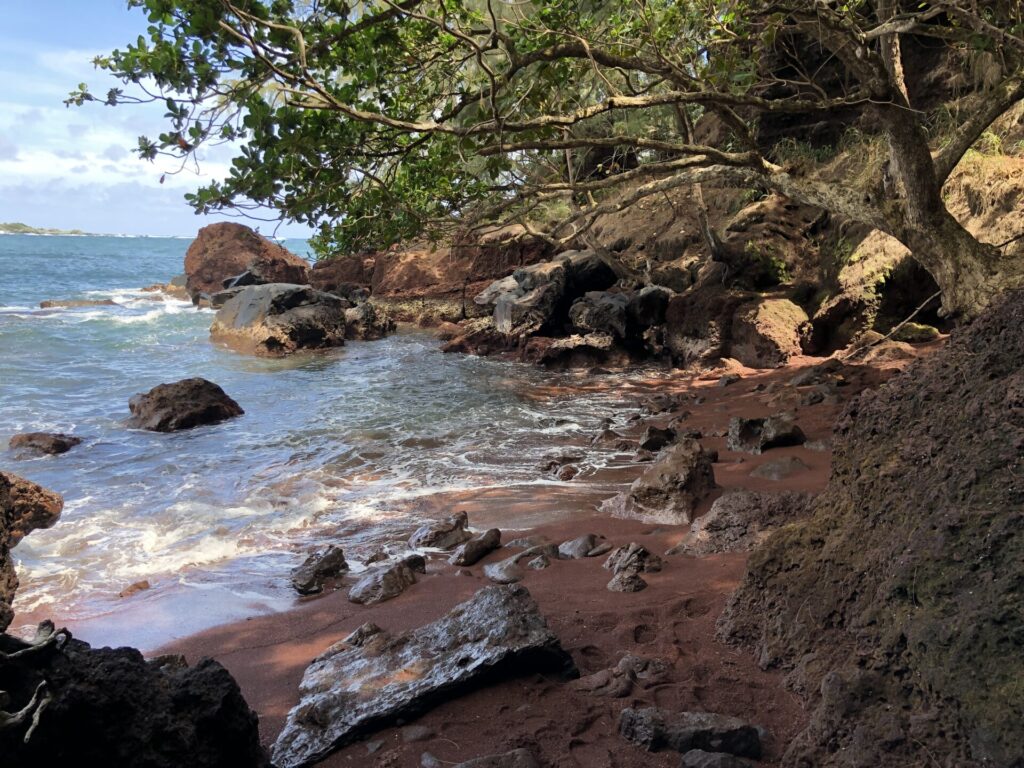 A walk along Hawaiian beaches reveals that seashells are relatively rare here compared to other parts of the world. This is due, in part, to rough seas and the obstacles between where the shell making creatures live and the shore. As a result, it’s especially rare to find a whole shell without some kind of damage. So please do your part by resisting the desire to bring one back as a souvenir. Once we were snorkeling at a remote beach when a visitor asked us, “How come I don’t see any such and such type of shells anymore? We were here five years ago and saw lots of them. I have a whole bag of ’em back home in my garage.” We told him, “Maybe we don’t have ’em anymore because they’re all in that bag of yours in the garage.”
A walk along Hawaiian beaches reveals that seashells are relatively rare here compared to other parts of the world. This is due, in part, to rough seas and the obstacles between where the shell making creatures live and the shore. As a result, it’s especially rare to find a whole shell without some kind of damage. So please do your part by resisting the desire to bring one back as a souvenir. Once we were snorkeling at a remote beach when a visitor asked us, “How come I don’t see any such and such type of shells anymore? We were here five years ago and saw lots of them. I have a whole bag of ’em back home in my garage.” We told him, “Maybe we don’t have ’em anymore because they’re all in that bag of yours in the garage.”
 What is that crackling sound, like bacon frying, I always hear while snorkeling or diving?
What is that crackling sound, like bacon frying, I always hear while snorkeling or diving?
For years this baffled people. In the early days of submarines, the sound interfered with sonar operations. Finally we know the answer: It’s hidden snapping shrimp defining their territory. One variety is even responsible for all the dark cracks and channels you see in smooth lobe coral. A pair creates the channels, then “farms” the algae inside.
Snorkeling
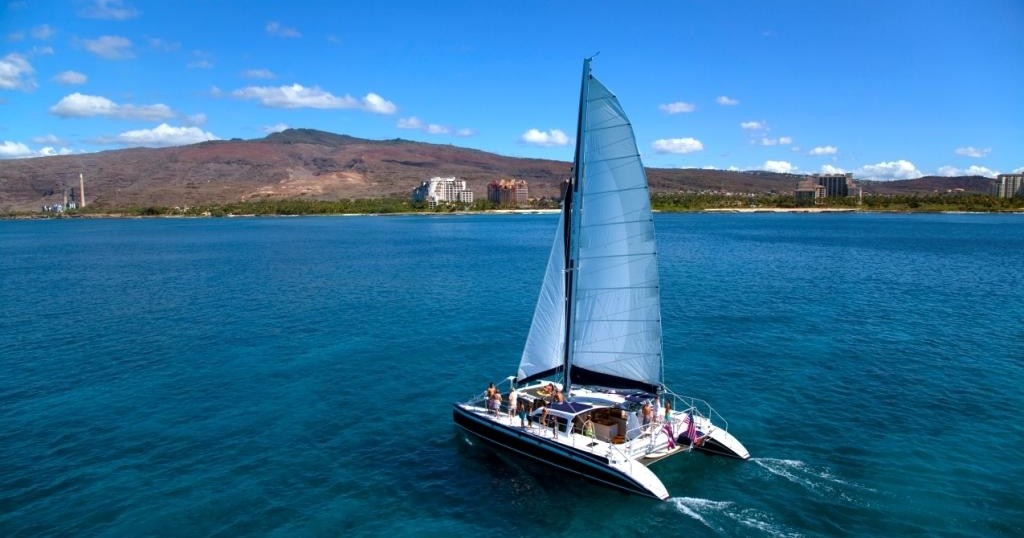
Ko Olina Ocean Adventures: Sunrise Snorkel Sail
Ko Olina Ocean Adventures offers 3-hour trips on their sailing catamaran including a hearty meal after the second snorkel stop. They also provide a 2-hour sunset sail featuring light appetizers and three adult beverages ($5 each for additional drinks).
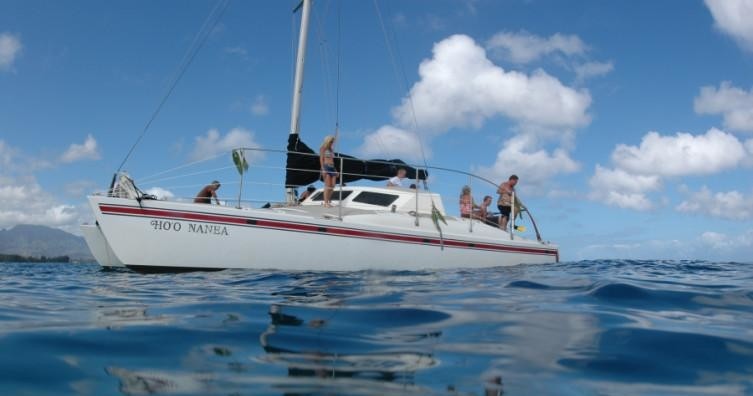
North Shore Catamaran Charters: 4-hour snorkel sail
North Shore Catamaran offers summer snorkel trips from June to September. Their 4-hour snorkel trip guides you through a marine sanctuary, ensuring no touching of the sea life. They also offer a 2-hour sunset cruise year-round, featuring stunning views and a fun crew.
What do turtles eat?
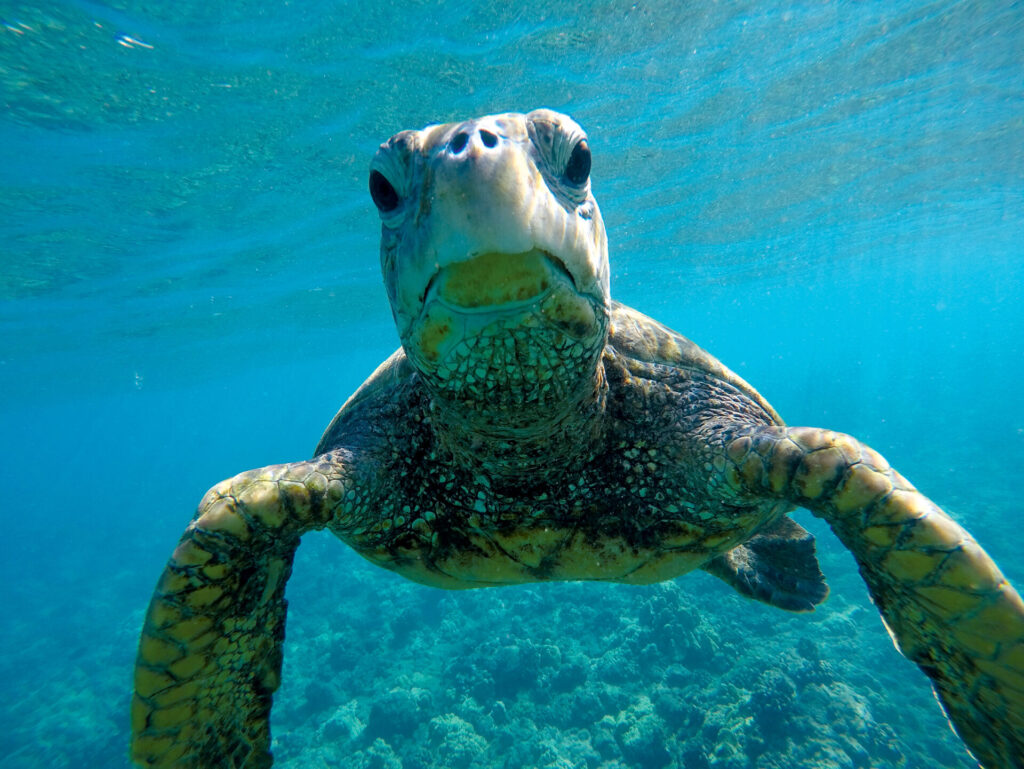 Dolphins. (Just teasing.) Different species have different diets. Our most common sea turtle is the green sea turtle and they primarily eat seaweed and algae growing on rocks. (A somewhat gross factoid about this is the “green” in their name doesn’t come from their skin or shell coloration. It comes from the color of their fat, thanks to all the seaweed they eat.) They’re also known to eat jellyfish when they are lucky enough to encounter them. Unfortunately for turtles and lucky for us, jellyfish aren’t especially numerous here.
Dolphins. (Just teasing.) Different species have different diets. Our most common sea turtle is the green sea turtle and they primarily eat seaweed and algae growing on rocks. (A somewhat gross factoid about this is the “green” in their name doesn’t come from their skin or shell coloration. It comes from the color of their fat, thanks to all the seaweed they eat.) They’re also known to eat jellyfish when they are lucky enough to encounter them. Unfortunately for turtles and lucky for us, jellyfish aren’t especially numerous here.
Know that you know a little more about the ocean and reefs here, the next step is to visit and see for yourself! Check out our guides to find the best beaches and snorkel spots across the islands. You’ll also find recommendations for the best activities, restaurants, sights and more. Our believable guides will help you have an unbelievable vacation.


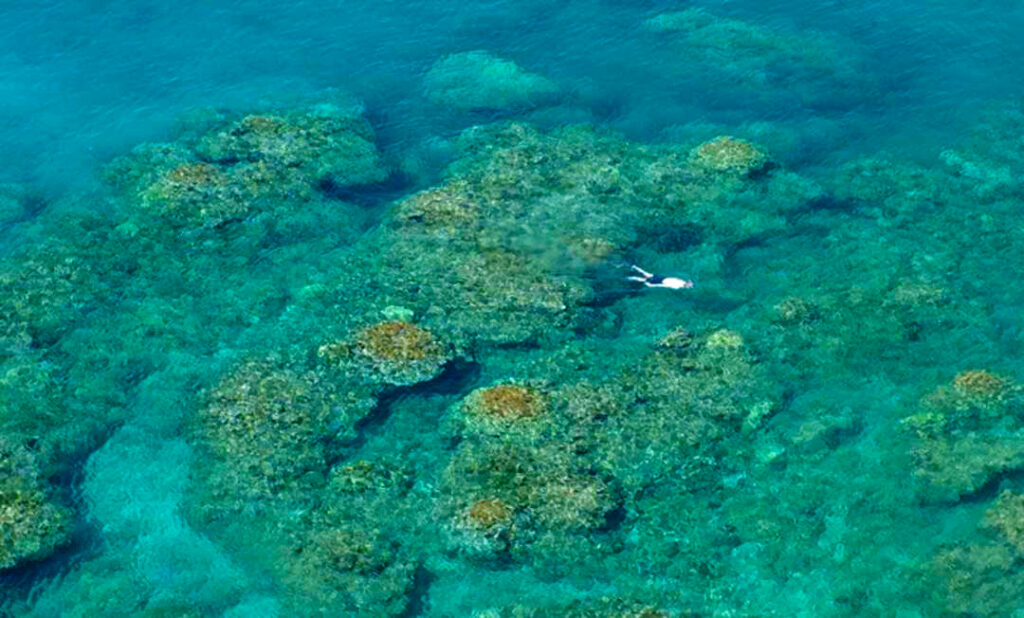
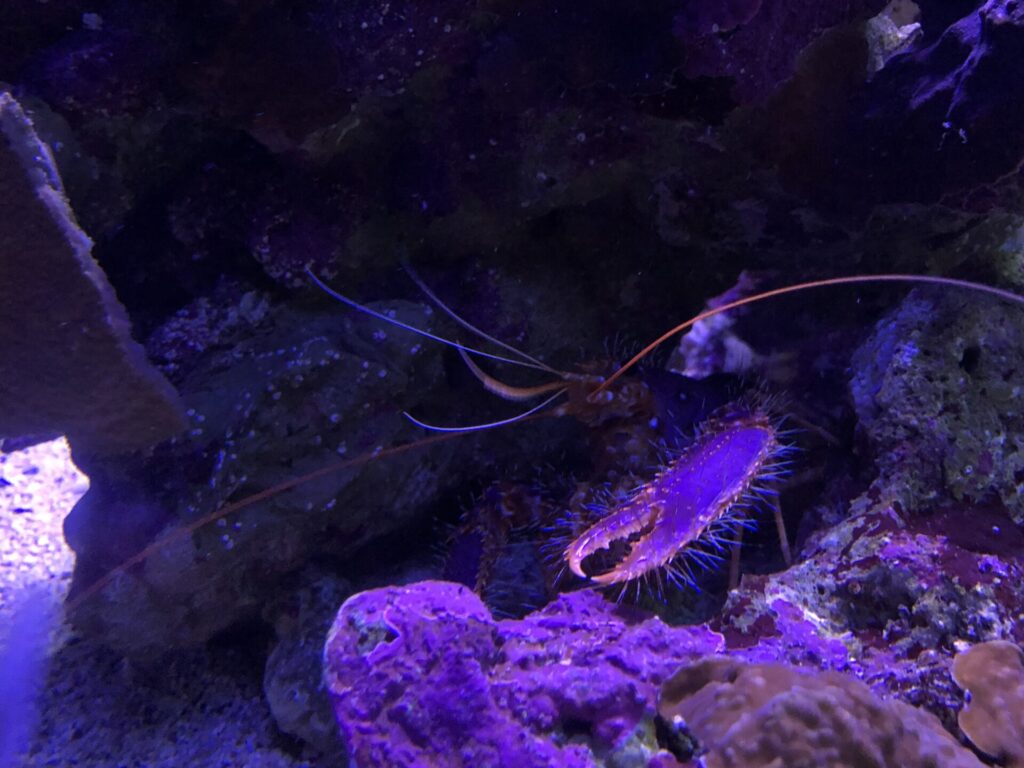


0 Comments